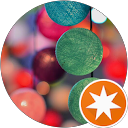Som Rong Pagoda: A Masterpiece of Khmer Architecture in Sóc Trăng
Som Rong Pagoda (Chùa Som Rong), formally named Botum Vong Sa Som Rong, stands as one of Sóc Trăng Province’s most significant and beautiful Khmer Buddhist temples. It represents the rich cultural and spiritual life of the Khmer ethnic community in the Mekong Delta. The pagoda captivates visitors with its ornate, colorful architecture and, most famously, its monumental reclining Buddha statue.
Address: 367 Tôn Đức Thắng, Phường 5, Tp. Sóc Trăng, Sóc Trăng, Vietnam.
I. History and Cultural Roots
The pagoda boasts a long and rich history. It was originally established around 1785.
The Name: Local tradition holds that the pagoda derives its name from the Som Rong tree species, which once grew abundantly in the area.
Architectural Evolution: Initially, the structure consisted of simple materials like bamboo and leaves. Over two centuries and twelve generations of abbots, the pagoda has undergone numerous renovations, resulting in the magnificent, spacious complex we see today.
Khmer Heritage: The entire compound features the distinctive architecture of Southern Khmer pagodas, including layered roofs adorned with intricate carvings of the Nagar snake god and the Krud divine bird.

II. Architectural Highlights and Must-See Sights
Visitors primarily come to admire the temple’s two major landmarks.
The Giant Reclining Buddha: Som Rong Pagoda proudly houses one of Vietnam’s largest reclining Buddha statues. This colossal figure measures 63 meters long, 22.5 meters high, and weighs 490 tons. The statue rests on a high pedestal, making it visible from a significant distance. This peaceful image depicts the Buddha entering Nirvana.
The Stupa (Relic Tower): A prominent gray stupa stands parallel to the main hall. Its unique design includes four paths and four gates, symbolizing the four Buddhist virtues: loving-kindness, compassion, joy, and equanimity. The stupa serves as the resting place for the ashes of former monks.
The Sala and Main Hall: The Main Hall (Chánh Điện) is used for worship, while the Sala (Assembly Hall) welcomes guests and hosts major traditional ceremonies, including the Khmer New Year (Chol Chnam Thmay).

III. Visitor Information and Etiquette
The pagoda welcomes visitors who seek spiritual enlightenment or cultural exploration.
Entrance Fee: Access to Som Rong Pagoda is typically free. However, donations are gratefully accepted to help maintain and support the temple’s operations.
Opening Hours: The pagoda generally remains open all day, from dawn until dusk. The best times to visit are early morning (7:00 AM–9:00 AM) or late afternoon (4:00 PM–6:00 PM), as the weather is cooler and the light is ideal for photography.
Dress Code: Visitors must wear modest clothing that covers the shoulders and knees to show respect for the sacred site.
Photography: Feel free to take photos of the majestic exterior, especially the reclining Buddha. However, exercise caution and respect when photographing inside the Main Hall or near monks and worshippers.
Contact: Specific contact details for the pagoda are not widely published for the public, but the address is easily searchable and accessible within Sóc Trăng City. You can easily reach the location by taxi or motor-taxi (xe ôm) from the city center.




